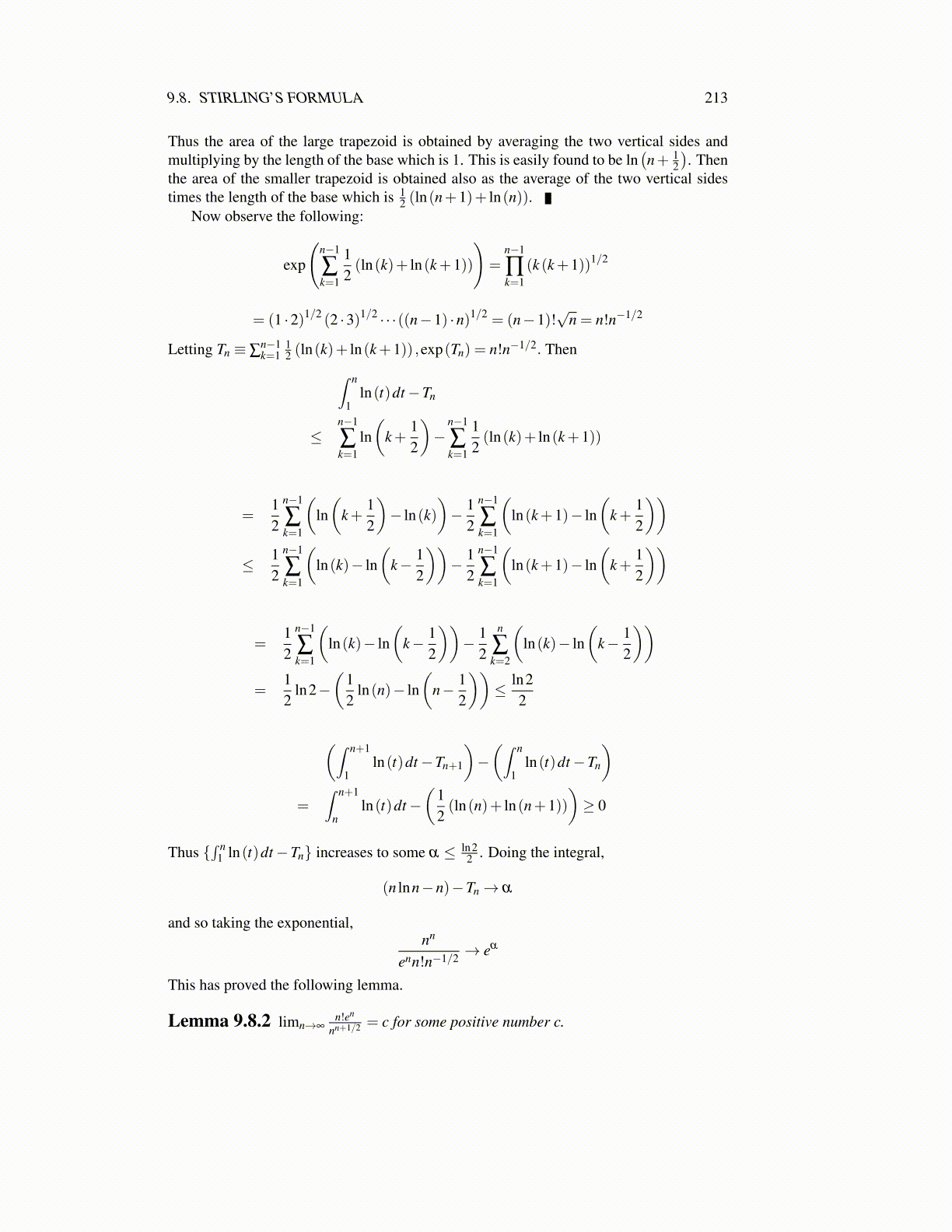
9.9. FUBINI’S THEOREM AN INTRODUCTION 213
that iterated integrals are what occur naturally in many situations, and each integral in aniterated integral is a one dimensional notion, so it is natural to consider the interchange ofiterated integrals in a book on single variable calculus. All of this depends on the theoremsabout continuous functions defined on a subset of Fp. In the case considered here, p = 2.
The following theorem is just like an earlier one for functions of one variable.
Theorem 9.9.1 Let f be either decreasing or increasing and let g be continuous on[a,b]. Then there exists c ∈ [a,b] such that
∫ ba gd f = g(c)( f (b)− f (c)).
Proof: If f is constant, there is nothing to prove so assume f (b)> f (a) or f (a)> f (b).Let M ≡ max{g(x) : x ∈ [a,b]} ,m ≡ min{g(x) : x ∈ [a,b]}. Then in a Riemann sum for∫ b
a gd f , if g is replaced by M, the resulting Riemann sum will increase and if it is replacedwith m, the resulting sum will decrease. Therefore, in case f is increasing,
m( f (b)− f (a)) =∫ b
amd f ≤
∫ b
agd f ≤
∫ b
aMd f = M ( f (b)− f (a))
and so m≤ 1f (b)− f (a)
∫ ba gd f ≤M. In case f is decreasing,
m( f (b)− f (a)) =∫ b
amd f ≥
∫ b
agd f ≥
∫ b
aMd f = M ( f (b)− f (a))
and so m ≤ 1f (b)− f (a)
∫ ba gd f ≤ M.Therefore, by the intermediate value theorem, there is
c ∈ [a,b] such that 1f (b)− f (a)
∫ ba gd f = g(c) .
Lemma 9.9.2 Let f : [a,b]× [c,d]→ R be continuous at every point so it is uniformlycontinuous. Let α,β be increasing on [a,b] , [c,d] respectively. Then
x→∫ d
cf (x,y)dβ (y) , y→
∫ b
af (x,y)dα (x)
are both continuous functions.
Proof: Consider the first. The other is exactly similar.∣∣∣∣∫ d
cf (x,y)dβ (y)−
∫ d
cf (x̂,y)dβ (y)
∣∣∣∣= ∣∣∣∣∫ d
c( f (x,y)− f (x̂,y))dβ (y)
∣∣∣∣≤∫ d
c| f (x,y)− f (x̂,y)|dβ (y)
But by uniform continuity, if |x− x̂| is small enough, then | f (x,y)− f (x̂,y)|< ε and so theintegral in the above is no larger than ε (β (d)−β (c)). Since ε is arbitrary, this shows theclaim.
Note that, since these are continuous functions, it follows from Theorem 9.3.7 that itmakes perfect sense to write the iterated integrals∫ b
a
∫ d
cf (x,y)dβ (y)dα (x) ,
∫ d
c
∫ b
af (x,y)dα (x)dβ (y)
Of course the burning question is whether these two numbers are equal. This is the nexttheorem.